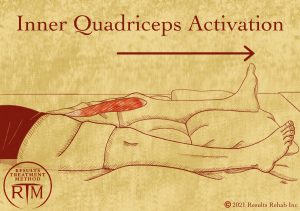If you’ve ever experienced back pain, you’re not alone. Millions of people worldwide struggle with this issue daily, and often the root cause can be traced to one surprising culprit: a weak core. While many of us associate core strength with washboard abs or toned stomachs, the core is much more than just a muscle group for aesthetics. In fact, a strong core is essential for maintaining a healthy back and preventing pain and injuries.
In this post, we’ll explore what the core actually is, how it supports your back, and some exercises from the Results Treatment Method that you can incorporate into your daily routine to strengthen it.
What Is the Core?
When most people think of the core, they picture the rectus abdominis—the “six-pack” muscle visible on some athletes. However, your core encompasses a larger group of muscles, including:
Transverse abdominis: The deep muscles that wrap around your abdomen and spine like a corset.
Obliques (internal and external): The muscles on the sides of your torso that help with rotation and lateral movements.
Multifidus: A deep muscle that stabilizes the spine.
Pelvic floor muscles: These muscles support your pelvic organs and contribute to stability.
Diaphragm: Yes, even this muscle plays a role in core stability, especially in conjunction with breathing.
Together, these muscles act as the body’s central pillar, providing stability, balance, and power for almost every movement we make. More importantly, they protect the spine by reducing the strain placed on it during physical activities.
How Does Core Strength Support the Spine?
A strong core is critical for supporting the lower back (lumbar spine). When the core muscles are weak, the spine has to bear more load, which can lead to poor posture, muscle imbalances, and injury. Here’s how a strong core benefits your back:
Improves Posture
Strong core muscles help maintain proper alignment of the spine. Without them, your body may adopt unhealthy postures—like slouching or overarching the back—that put excessive pressure on the spine and lead to pain.
Prevents Injuries
Every time you lift, twist, or bend, your core muscles are working to stabilize your body. A weak core means that other muscles, like those in your lower back, have to overcompensate, increasing the risk of sprains or strains.
Reduces Pressure on the Spine
The core acts like a natural brace for your spine. With a strong core, you can distribute the weight of everyday movements more evenly across your body, reducing the load on your vertebrae and disks.
Enhances Balance and Stability
Whether you’re standing, sitting, or moving, core strength contributes to your ability to stay balanced. Improved stability reduces the likelihood of falls and other accidents, which can contribute to spinal injuries.
Supports Recovery from Back Pain
For individuals already experiencing back pain, core-strengthening exercises are often a critical part of the rehabilitation process. Strengthening these muscles helps alleviate the pressure on the injured area, facilitating healing and preventing future issues.
Core-Strengthening Exercises for a Healthy Spine
Strengthening your core doesn’t require hours at the gym. You can integrate simple, effective exercises into your daily routine to build core stability and protect your back. Here are a few beginner-friendly exercises as recommended by the Results Treatment Method:
Plank
The plank is one of the best exercises to engage your entire core. Start in a push-up position, but rest on your forearms. Keep your body in a straight line from your head to your heels, engaging your core. Hold for 20–30 seconds, gradually increasing as your strength improves.
Bird-Dog
Begin on your hands and knees. Slowly extend your right arm forward and your left leg back, maintaining a straight line from your hand to your foot. Hold for a few seconds before switching sides. This exercise strengthens the lower back, glutes, and core simultaneously.
Bridge
Lie on your back with your knees bent and feet flat on the floor. Lift your hips towards the ceiling, engaging your glutes and core. Hold for 5–10 seconds before lowering back down. This exercise targets the core, lower back, and glutes.
Dead Bug
Lie on your back with your arms extended toward the ceiling and your knees bent at a 90-degree angle. Slowly lower your right arm and left leg towards the ground, keeping your core engaged. Return to the starting position and repeat on the other side. This move helps improve core coordination and stability.
Side Plank
Lie on your side with your legs stacked and your forearm resting on the floor. Lift your hips, creating a straight line from your head to your feet. Hold for 15–30 seconds, then switch sides. This exercise strengthens the obliques and deep core muscles.
How to Integrate Core Work Into Your Routine
You don’t need to dedicate an entire workout to core strengthening; instead, try incorporating core exercises into your regular workout routine or adding them at the end of your day. Performing these exercises 3–4 times a week is sufficient to start building strength and improving back health.
It’s important to remember that core strength is about endurance and control, not just power. Focus on performing each movement slowly and with control, engaging your core muscles throughout the entire exercise.
Conclusion
Maintaining a strong core is key to a healthy, pain-free back. By incorporating simple core exercises into your routine, you can improve your posture, prevent injuries, and reduce the strain on your spine. Whether you’re recovering from back pain or trying to prevent it, strengthening your core is one of the most effective ways to ensure your back remains strong and supported throughout your daily activities.
If you’re struggling with back pain or unsure how to begin, consider consulting a physical therapist who can help tailor a core-strengthening program to your needs.
For more helpful information on how the Results Treatment Method can improve your quality of life, read our other blogs at resultsrehab.com/blogs.




